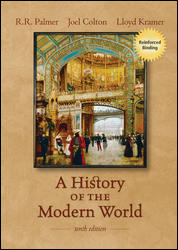
History of the Modern World, 10th Edition (Palmer)Chapter 27: The Changing Modern WorldChapter OverviewWith the end of communism in Europe in the late twentieth century, some observers suggested that the entire world would now move in the direction of democratic governments and capitalist economies. However, new conflicts and social movements soon made apparent the error of that assumption. In the western democracies, long-term economic crises prompted moderate political leaders to pursue a “third way” between the conservative and progressive agendas. Japan faced an economic downturn and its first serious political crisis since World War II. The European Union broadened its membership and implemented economic unification, but political integration remained problematic. The computer technology revolution transformed the world with the rise of the Internet, but the gains of the new economy were not shared equally. Scientific advances in medicine, nuclear physics, and the life sciences brought dramatic transformations in not only people’s daily lives but in their understandings of the world. Social movements pressed for greater inclusion and equality, leading in particular to dramatic advances for women in certain parts of the world. In response to the pressures of modern life, some religious groups reconciled their views with the changing world, while others reacted violently to change. New conflicts, often driven by ethnic or religious differences, threatened the stability of the world. The UN and the international community struggled to define human rights and the role of the organization in international affairs. The war on terror, initiated in response to the attacks of September 11, 2001, has had ambiguous outcomes at best and thus far, has not come to a conclusion. Finally, the population explosion and the environment gave further cause for concern as the new millennium began. |  |















